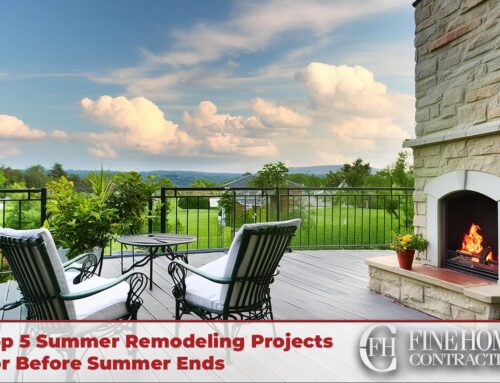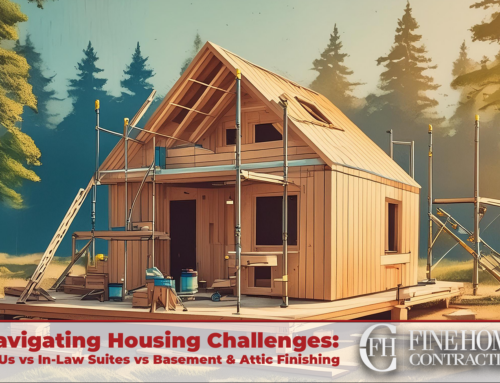Decks are versatile outdoor spaces that add charm and functionality to any home. Whether you’re envisioning a peaceful oasis for relaxation or a lively entertainment area for gatherings, understanding the basics of deck materials, terminology, and design is essential. In this comprehensive guide, we’ll explore different deck materials, explain key deck terminology, and provide insights into deck design considerations. Let’s dive in and discover everything you need to know about decks!
Deck Materials:
When it comes to building a deck, choosing the right materials is crucial for both durability and aesthetics. Here are some popular deck materials along with their prices, pros, and cons:
Trex Composite:
- Price: Trex composite decking is a premium option with higher upfront costs, averaging between $140 and 160 per square foot including materials and labor.
- Pros: Trex decking is low maintenance, resistant to fading and stains, and doesn’t require staining or sealing. It’s also environmentally friendly, made from recycled materials.
- Cons: The initial investment for Trex composite is higher than other materials. It can also be prone to scratching, although newer varieties offer improved durability.
Vinyl:
- Price: Vinyl decking is mid-range in terms of cost, ranging from $130 to 150 per square foot including materials and labor.
- Pros: Vinyl decks are highly durable, resistant to moisture, and require minimal maintenance. They are also available in a wide array of colors and styles, offering versatility in design.
- Cons: Vinyl decking can be susceptible to fading over time, and extreme temperatures can cause it to expand or contract. It may also have a plastic-like appearance that some homeowners find less appealing.
Pressure-Treated Wood:
- Price: Pressure-treated wood is a budget-friendly option, typically costing between $125 and $135 per square foot including materials and labor.
- Pros: Pressure-treated wood is readily available, easy to work with, and provides a natural aesthetic. It can be stained or painted to match your desired look.
- Cons: It requires regular maintenance, including staining or sealing to protect against moisture and pests. Over time, pressure-treated wood may warp, splinter, or fade if not properly cared for.
Exotic Hardwoods:
- Price: Exotic hardwoods are high-end materials, ranging from $180 to upwards of $200 per square foot, including materials and typical labor costs.
- Pros: Exotic hardwoods like Ipe, Tigerwood, and Cumaru offer exceptional durability and natural beauty. They are resistant to rot, insects, and weathering, making them ideal for long-lasting decks.
- Cons: Exotic hardwoods require regular maintenance, including periodic sealing and staining. The high price point can also be a limiting factor for some homeowners.
Deck Terminology:
Joists:
Joists are horizontal beams that provide structural support for the deck’s surface. They are typically made of treated lumber or steel and are placed parallel to each other, supporting the deck boards.
Flashing:
Flashing refers to thin, weatherproof metal strips installed where the deck connects to the house. It prevents water from seeping into the house and causing damage.
Ledger:
The ledger board is a horizontal board attached to the house, providing structural support for the deck. It is securely fastened with lag screws or bolts and is an essential component for deck stability.
Footings:
Footings are structural supports that anchor the deck to the ground. They are typically made of concrete and serve as a stable foundation, distributing the deck’s weight evenly.
Designing Your Outdoor Space:
When it comes to designing your deck, careful consideration of layout and functionality can transform your outdoor space into a haven of relaxation and entertainment. One key aspect of deck design is creating distinct zones within your deck, each serving a specific purpose and catering to different activities. By defining individual zones, you can maximize the functionality of your deck and create a harmonious flow throughout the space.
To begin, envision how you intend to use your deck. Will it primarily be a dining area for family meals and gatherings? Or perhaps you envision a cozy lounge area for relaxation and conversation? By identifying the primary activities, you can allocate space accordingly and ensure each zone is optimized for its intended purpose.
It’s important to create unity throughout the space to avoid a disjointed or cluttered appearance. Consider elements such as color schemes, materials, and overall style to establish a cohesive design. Harmonizing the visual elements will create an inviting atmosphere and make your deck feel like a seamless extension of your home.
In addition to functionality and unity, here are a few general design tips to enhance your deck:
- Incorporate ample seating: From comfortable chairs and sofas to built-in benches or outdoor sectionals, having plenty of seating options will encourage relaxation and socializing.
- Add shade and privacy: Consider incorporating elements like pergolas, umbrellas, or privacy screens to provide shade and seclusion when desired.
- Utilize lighting: Extend the usability of your deck into the evening by incorporating outdoor lighting. From string lights and lanterns to built-in fixtures, lighting can create ambiance and ensure safety.
- Integrate greenery: Enhance the natural appeal of your deck by incorporating potted plants, hanging baskets, or even a vertical garden. Plants can add color, texture, and a refreshing atmosphere.
Remember, your deck design is a reflection of your personal style and preferences. The key is to create a space that aligns with your vision and meets your specific needs. Let’s explore some common deck layouts and gain inspiration for your own deck design.
Common Deck Layouts:
Rectangular: This classic layout suits most homes and offers a versatile space for furniture arrangement.
L-Shaped: Ideal for larger areas, the L-shaped layout provides separate zones for dining and relaxation.
Multi-Level: Multi-level decks add visual interest and create distinct areas for various activities.
Selecting Deck Materials to Match Siding Colors and Styles:
Complementary Colors: Choose deck materials that complement the colors of your siding. For example, if your siding is light gray, consider a darker-toned deck for contrast.
Harmonizing Styles: Match the architectural style of your home’s siding with the deck materials. For traditional siding styles, a natural wood deck can enhance the overall aesthetic.
Understanding deck materials, terminology, and design principles is crucial when planning your dream deck. By considering the pros and cons of different materials, familiarizing yourself with essential deck terminology, and incorporating thoughtful design elements, you can create an outdoor space that perfectly complements your lifestyle and enhances the beauty of your home. Now that you’re equipped with the knowledge, go ahead and start designing your dream deck!








